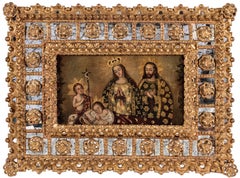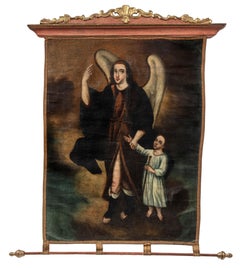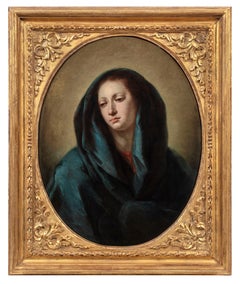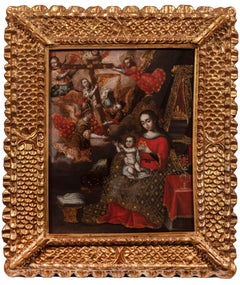Want more images or videos?
Request additional images or videos from the seller
1 of 6
Placido CostanziAnnunciation
About the Item
- Creator:Placido Costanzi (born circa 1690-1759, Italian)
- Dimensions:Height: 18.375 in (46.68 cm)Width: 12.875 in (32.71 cm)
- Medium:
- Period:
- Condition:Excellent.
- Gallery Location:New York, NY
- Reference Number:1stDibs: G12060510229
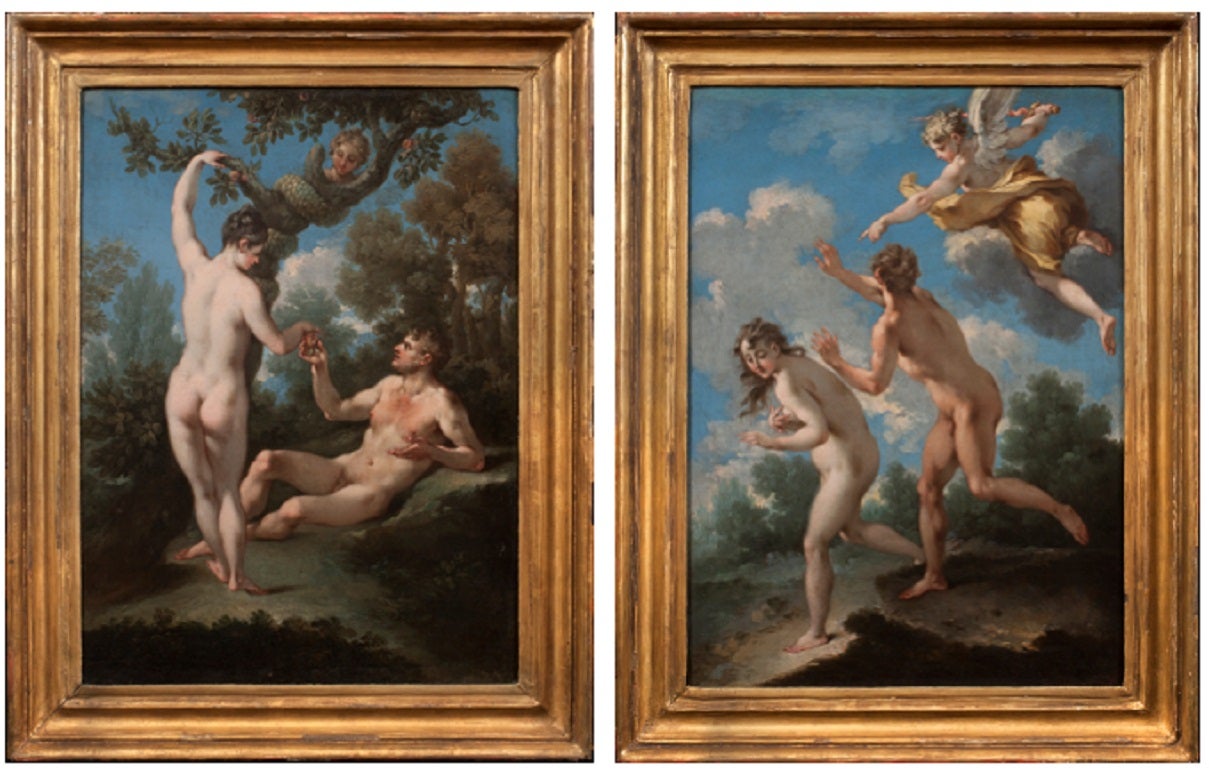
About the Seller
5.0
Recognized Seller
These prestigious sellers are industry leaders and represent the highest echelon for item quality and design.
Established in 1997
1stDibs seller since 2012
24 sales on 1stDibs
Typical response time: 7 hours
Authenticity Guarantee
In the unlikely event there’s an issue with an item’s authenticity, contact us within 1 year for a full refund. DetailsMoney-Back Guarantee
If your item is not as described, is damaged in transit, or does not arrive, contact us within 7 days for a full refund. Details24-Hour Cancellation
You have a 24-hour grace period in which to reconsider your purchase, with no questions asked.Vetted Professional Sellers
Our world-class sellers must adhere to strict standards for service and quality, maintaining the integrity of our listings.Price-Match Guarantee
If you find that a seller listed the same item for a lower price elsewhere, we’ll match it.Trusted Global Delivery
Our best-in-class carrier network provides specialized shipping options worldwide, including custom delivery.You May Also Like
New Move
By Frank Arnold
Located in Fresno, CA
"New Move 8" Oil on Canvas is a mix of blues and greens with chrome yellow accents. Frank Arnold is thought by many to be one of the foremost abstract figurative painters and sculpto...
Category
2010s Abstract Abstract Paintings
Materials
Canvas, Oil
My Other Side
By Frank Arnold
Located in Fresno, CA
“My Other Side” is 48”x 36”. This is an earlier piece by Arnold from the estate of a late collector of his work. This piece is predominantly shades of red from light to almost black....
Category
Early 2000s Abstract Abstract Paintings
Materials
Canvas, Oil
Last Dance
By Frank Arnold
Located in Fresno, CA
Last Dance is an Oil on Canvas painting in soft, light aqua tones with red/brown accents. Frank Arnold is thought by many to be one of the foremost abstract...
Category
2010s Abstract Abstract Paintings
Materials
Canvas, Oil
Oil on Canvas “Blake’s Wish”
By Frank Arnold
Located in Fresno, CA
"Blake’s Wish" is 60” x 48”. Solo female figure Dominant colors are black, white and deep crimson red.. Frank Arnold’s paintings exhibit the highest quality materials for a truly arc...
Category
2010s Abstract Abstract Paintings
Materials
Canvas, Oil
Studio 1528
By Frank Arnold
Located in Fresno, CA
"Studio 1528" Oil on Canvas presents a bold visage in blues and white on a mixed field dominated by blues and green tone.
Frank Arnold is viewed as one of the foremost abstract figurative painters and sculptors of our time. He is a living master guided by a personal mission to “turn on a light in the human soul,” through his passionate creation of “Messengers” from his deeper mind connection with Carl Jung's archetypal images, the collective unconscious, and Jungian Synchronicity. These unconscious forms from his deeper mind resonate as personal messages of universal acceptance, reaching out to the viewer.
Arnold has been honored as IAD Artist of the year 2018 by International Artist Day, and 2013 FAC Horizon Artist Award. He has exhibited his artwork in numerous galleries and museums, and is in collections worldwide. Arnold divides his working days between oil painting in San Jose del Cabo, Baja Sur...
Category
2010s Abstract Abstract Paintings
Materials
Canvas, Oil
Moving 5
By Frank Arnold
Located in Fresno, CA
“Moving 5” is 60”x 48”. The vibrant yellow surface tones of this piece are broken in several places allowing random glimpses of Arnold’s dreamlike underpainting for a multi-dimension...
Category
21st Century and Contemporary Abstract Abstract Paintings
Materials
Canvas, Oil
Oil on Canvas “Arroyo New”
By Frank Arnold
Located in Fresno, CA
" Arroyo New" is 72” x 60”. Shades of sea green with shocks of coral and orange create a solo figure on a frosty field of white and light grey. Frank Arnold’s paintings exhibit the h...
Category
2010s Abstract Abstract Paintings
Materials
Canvas, Oil
Pure 17
By Frank Arnold
Located in Fresno, CA
"Pure 17" is an oil on Canvas of sharply contrasting blues on a white field. Frank Arnold is thought by many to be one of the foremost abstract figurative painters and sculptors of o...
Category
2010s Abstract Abstract Paintings
Materials
Canvas, Oil
Ruler 58
By Frank Arnold
Located in Fresno, CA
"Ruler 58" Oil on Canvas depicts a bold commanding visage in a mixed palette with dominant blues. is a bold visage Frank Arnold is thought by many to be one of the foremost abstract ...
Category
2010s Abstract Abstract Paintings
Materials
Canvas, Oil
Oil on Canvas "Azul Arroyo"
By Frank Arnold
Located in Fresno, CA
“Azul Arroyo” is 60”x48”. Central figure in blue with white accents on a background ranging from white to deep blue/black. The foreground exhibits heavy strokes and Arnold’s “8” fig...
Category
2010s Abstract Abstract Paintings
Materials
Canvas, Oil
More From This Seller
View AllA Magnificent Gilt Wood Mirrored Frame
Located in New York, NY
Provenance: Private Collection, Argentina; there acquired by
Mr. and Mrs. Ernest T. Harper, New York, by 1960; by descent to:
Mr. and Mrs. Alan Harper, New York, until 2024.
This extraordinary mirrored frame is an exuberant and nearly perfectly preserved example of Andean 18th-century decorative art. Pierced mirrored rosettes surrounding floral motifs are set against mirrored surrounds along a broad frieze bordered within and without by elaborate raised moldings, inlaid by small, shaped mirrors. Repeating ornamental motifs reflecting both Spanish and indigenous designs surround both the inside panel and the exterior perimeter, the four corners of which are punctuated by mirrored rosettes.
Glass mirrors were unknown to the indigenous population of the Americas prior to the arrival of Europeans (obsidian mirrors...
Category
18th Century Old Masters Figurative Paintings
Materials
Canvas, Mirror, Wood, Oil
A Guardian Angel Leading a Child
Located in New York, NY
Provenance: Private Collection, Argentina; there acquired by
Mr. and Mrs. Ernest T. Harper, New York, by 1960; by descent to:
Mr. and Mrs. Alan Harper, New York, until 2024.
This s...
Category
18th Century Old Masters Figurative Paintings
Materials
Canvas, Oil
Head of the Virgin
Located in New York, NY
Provenance: Private Collection, Paraguay.
This unpublished Head of the Virgin is a new addition to the rich corpus of paintings by Giovanni Battista Tiepolo. While the artist freque...
Category
18th Century Old Masters Figurative Paintings
Materials
Oil, Canvas
Virgin and Child with Angels Carrying the Cross (Vision of the Cross)
Located in New York, NY
Provenance: Fernandez Jimenez, Spain; part a family collection for over 80 years.
Prints transported to the New World for use in missionary work and religious instruction often serv...
Category
18th Century Old Masters Figurative Paintings
Materials
Canvas, Oil
Madonna and Child with Angels in the Clouds
Located in New York, NY
Provenance: Charles H. and Virginia Baldwin, Claremont, Colorado Springs, Colorado ca. 1907-1934; thence by descent until sold in 1949 to:
Charles Blevins Davis, Claremont (renamed Trianon), Colorado Springs 1949 -until gifted in 1952 to:
The Poor Sisters of Saint Francis, Trianon, Colorado Springs, 1952 until acquired, 1960, by:
John W. Metzger, Trianon, renamed as the Trianon School of Fine Arts, Colorado Springs, 1960-1967; when transferred to:
The Metzger Family Foundation, Trianon Art Museum, Denver, 1967 - 2004; thence by descent in the Metzger Family until 2015
Exhibited: Trianon Art Museum, Denver (until 2004)
The present work is a spectacular jewel-like canvas by Amigoni, rich in delicate pastel colors, most likely a modello for an altarpiece either lost or never painted. In it the Madonna stands firmly upon a cloud in the heavens, her Child resting on a delicate veil further supported by a cloud, as he gently wraps his arm around his mother’s neck. From above angels prepare to lower flowers and a wreath, while other angels and seraphim surrounding the two joyfully cavort.
Dr. Annalisa Scarpa, author of the forthcoming monograph on Jacopo Amigoni...
Category
18th Century and Earlier Figurative Paintings
Materials
Canvas, Oil
Young Christ Pricked by a Thorn (Niño de la Espina)
Located in New York, NY
Provenance: Private Collection, Paraguay, for at least the last 80 years
Painted in the Viceroyalty of Peru during the 18th century, the present work depicts the young Christ as the Niño de la Espina—a devotional representation of Christ as he looks down at his bleeding finger, which has been pricked by the crown of thorns resting on his lap. The subject of the Young Christ Pricked by a Thorn was especially popular in Cuzco, and the rich details and decorative elements of our work perfectly capture the essence and style of the Cuzco School of painting.
In our painting, Christ wears an intricately patterned floor-length robe trimmed with gilded cuffs and a gilded collar. The delicate gilding, including the halo of golden rays emanating from his head, are executed in brocateado, an ornamental over-gilding technique that is characteristic of the Cuzco School. The red chair on which Christ sits also includes brocateado in the decorative gilt elements. The form of the chair takes inspiration from those commonly used by friars both in Spain and the Andes, known as silla frailera or sillon frailero, and was also frequently employed in related depictions of the Virgin Mary Spinning. Here the young Christ is rendered with soft, elongated features that reflect the influence of the Italian Mannerist painters who were pivotal to the formation of the Cuzco School, including the Jesuit friar Bernardo Bitti and Matteo Pérez del Alesio. Additionally, while its origins can be traced to Northern European pictorial traditions, the lush flower garland that frames the work is a signature feature of Cuzqueño painting...
Category
18th Century Old Masters Figurative Paintings
Materials
Canvas, Oil
